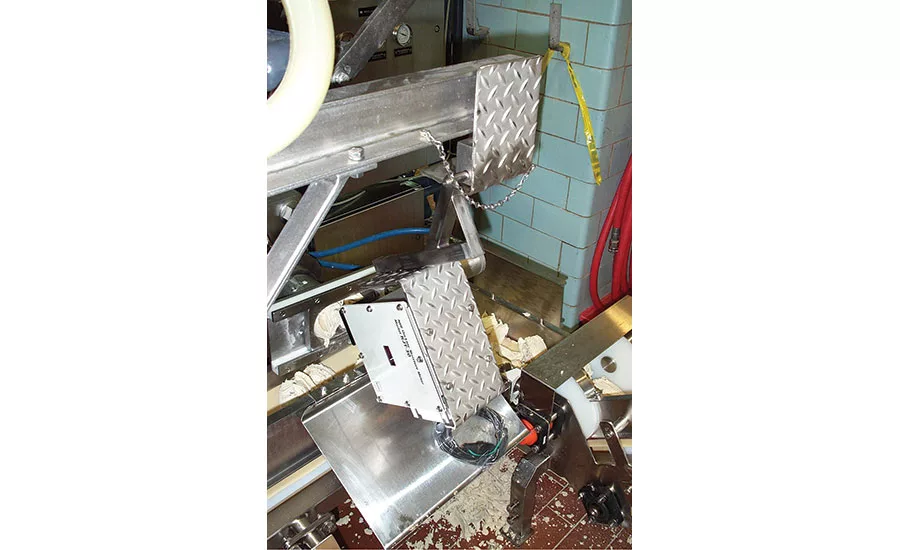Dry Processing Technology
How Western Foods manages moisture
Ingredient supplier optimizes quality, minimizes waste with moisture measurement system

Western Foods uses a Kett moisture balance to ensure that moisture of both raw ingredients and finished products are within the necessary range.
Photo courtesy of Western Foods
Western Foods, a dedicated gluten and allergen-free grain milling facility, produces grain flours, meals and blended products in the heart of California’s rice growing region.
Western Foods and its sister company, Pure Nature Foods, share a production facility. The companies needed a better moisture management system to ensure that quality was up to par while also minimizing waste.
For dry ingredients, moisture content needs to fall into a specific range for safety and quality. Neglecting to properly take this into account through the entire ingredients receiving and production process is a recipe for failure. It can result in the product being rejected at the receiving dock and replaced at the producer’s cost.
For snack foods, it also takes state-of-the-art moisture measurement to produce quality products. Inaccurate moisture content can alter taste, texture, and appearance, as well as lead to sogginess, staleness, or compromised shelf life, which could lead to mold or product spoilage.
“Measuring moisture is one of the most important quality checks, so it is vital for us to have good control from incoming raw ingredients through processing,” says Elodie Thao, Western Foods quality assurance manager.
To better measure and manage moisture, both in raw ingredients and finished products, Western Foods turned to an FD720 moisture balance by Kett US. Using the principle of loss on drying, the device automatically weighs a sample, dries it, measures the weight loss due to drying and calculates the moisture (or solid) content of the product. With the device, tests can be conducted by personnel of any skill level, both near the production line or in the laboratory.
Input and Process Testing
When Western Foods receives incoming raw ingredients, whether grain or premade powders for dry mix blends, quality control technicians collect samples and do a moisture test on every lot to ensure the moisture is within specification. Testing is performed on an average of about 15 truckloads per day.
Western Foods manufactures a significant amount of rice flour, so a rice whiteness meter is also used to test incoming ingredients. This tests whole rice kernels and instantly provides the “whiteness value.” The value can be used as an assessment of milling quality and purity. Such analysis allows the rice processor to easily test products for color stability and grading.
During production, additional quality checks are performed every hour from the start of production to the end.
“We do moisture tests of our finished products inline to ensure it is within specification,” says Thao. “The industry standard for flour is usually 12 to 13 percent moisture content, so that is our range. If it is above that, it is put it through a drying process and then re-tested.”
R&D Testing
Pure Nature Foods focuses on contract product development, and helps food companies create taste profiles with project specific blends.
Since the company focuses on healthy snacks, it is essential to measure not only moisture content but also analyze a host of organic factors important to health and nutrition. The company utilizes a Kett KJT270 Infrared Composition Meter to measure both moisture and the organic components of the snack products. One test, which takes only seconds, can provide simultaneous analysis of constituents such as moisture, fat/oil, protein, sugar, fiber, and macro organics.
While moisture balances are limited to measuring water content, composition meters utilize a more sophisticated process to analyze the moisture content and organic composition of food samples. Composition analyzers are available as inline, online, handheld, or QA laboratory desktop models.
The approach utilizes Near-Infrared (NIR) light, a highly accurate, non-contact secondary measurement method that can deliver immediate, laboratory quality, composition readings. Originally developed by the USDA, the technology is proven for food products and ingredients.
According to Thao, although Pure Nature Foods currently utilizes the composition analyzer primarily for R&D, it will also use the device as a quality check for ingredient input as well as for in-process and finished product testing.
“We are happy with all the devices that help us measure moisture, whiteness, and composition,” says Thao. “Because they are very accurate and reliable as well as easy to use and maintain, they help us maintain quality throughout our process, which always helps the bottom line.”
Looking for a reprint of this article?
From high-res PDFs to custom plaques, order your copy today!







